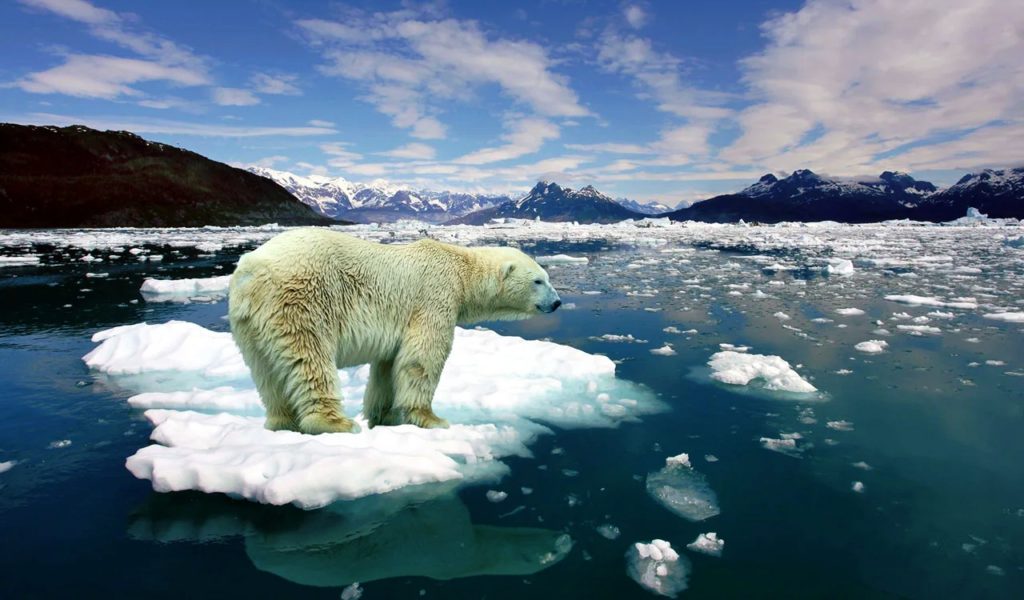Global Warming might not be the best wording to use as the Earth might be warming up some, but many of us cannot notice it. The term “Climate Change” is much more accurate because, unlike erratic weather, the climate is much easier to follow and study scientifically.
Today we know that human beings have caused the rapid climate change the world is currently dealing with. Manmade climate change is often debated, but most scientists agree that humans have caused it. Yet most of us assumed this took place roughly around the start of the Industrial Revolution.
However, if a recent study out of Oregon State University is to be believed, human beings have been causing climate change in some form dating back centuries before that. At least, being linked to it ever so slightly which then enabled a major shift.
It all began when researchers uncovered two intervals when ice and ocean conditions would have been favorable to support early human migration.
We know most humans came out of the African and Asian territories, but when most migrated over has been widely debated. In this discovery, early migration would have taken place late in the last ice age according to a new paper published in the peer-reviewed Proceedings of the National Academy of Sciences.
The Findings

Findings in the study managed to support growing evidence that the most likely path for the first Americans out of Africa was a Pacific coastal route. It would have been in use before the large ice sheet that covered most of modern-day Canada and the United States began to melt away.
Researchers used sediment cores they collected in the northeast Pacific Ocean, where they found two distinct climate intervals. According to Alan Mix, an Oceanographer & Paleoclimatologist at Oregon State University who co-authored the paper, there was a combination of winter sea ice and ice-free summer conditions. This likely would have made early humans migrate further south. Mix further noted:
“Our research indicates that during the last ice age, the ice along the west coast of North America, from Seattle to Alaska, moved back and forth quite a bit. Surprisingly, there were times when ice didn’t block the way for those early people. In fact, some ice might have made migration easier.”
Dr. Summer Praetorius is the lead author of the paper and a research geologist at the U.S. Geological Survey. She also happened to have earned her doctorate at Oregon State and has worked with Mix a lot.
It is said that early Americans most likely occupied part of Beringia, a land mass in the present-day Bering Strait that actually created a bridge between Asia and North America. Finding out when and even how these early people moved south into the Americas from this area has been researched for decades now.
What We Know

Sadly, most of the evidence of early people in the Americas is less than 13,000 years old. Thus, it was likely left after the climate warmed and the mile-thick ice sheet melted away. Although, this evidence did lead to a theory that the Americas were populated through an inland corridor that opened as the infamous ice sheet started to melt away.
The most recent evidence collected, including the discovery of 15,700-year-old projectile points, indicated that people had to have been coming to the Americas well before there was an ice-free inland corridor opening. In response to all of this, Praetorius said:
“The mounting evidence for human arrival prior to the opening of the ice-free corridor makes the coastal route the most likely pathway into North America. We wanted to try and figure out how regional climate change affected the viability of the coastal route at different times. For example, understanding where and when sea ice formed in the Gulf of Alaska has implications for how people could move along the coastline—whether by foot or in boats.”
A high-resolution ocean model that was used by Alan Condron from Woods Hole Oceanographic Institution in Massachusetts showed ice from the edges of the Cordilleran ice sheet began to melt, it drained a lot of fresh water into the ocean with it.
This meltwater accelerated ocean currents moving north, which would have made boat travel heading south along the coast (between land spots), much harder to accomplish.
Sediment cores did show the presence of sea ice at key intervals that could have supported travel on foot. These cores, collected in the Gulf of Alaska, contained molecular traces of the remains of algae that grew around sea ice along the shortline.
Between two intervals from 22,000 to 24,500 years ago and then again from 14,800 to 16,400 years ago, sea ice was present in the winter even as the summer warmed. That would have potentially given early Americans the chance to travel along the coast. Dr. Praetorius elaborated on this, saying:
“Sea ice is relatively flat and pretty stable when it is stuck to the shoreline, so you can walk on the ice and hunt seals to survive through the winter. It seems possible that sea ice could have facilitated movement, rather than hinder it, by providing a more traversable surface than the hazardous pathway of crevassed glaciers or paddling against strong ocean currents.”